Overcome Earthquake Anxiety By Staying Prepared For Disasters
As Solid As The Ground We Stand On: Hope for the best, prepare for the worst
Coming to Japan is one of the best decisions I have made in my life. But the fear of earthquakes is real. Here is how I managed to find a way to live with it.
“My name is Hana and I’m a fourth grader in elementary school. I feel lucky to be Japanese, I can go to the beach and the mountains and eat delicious food. But there are some things about Japan I don’t like. We have typhoons, tsunami and earthquakes. I think earthquakes are the scariest things of all.”
The video at Tokyo’s Honjo Life Safety Learning Center then shifts to scenes of real life destruction and I want to throw up. 1923, Great Kanto Earthquake. 1983, Sea of Japan. 1995, Kobe. 2011, Tohoku. I force myself to watch because I know I have to face this reality.
 © Photo by iStock
© Photo by iStockIshinomaki in Miyagi Prefecture was one of the most damaged Japanese cities in the March 2011 earthquake and tsunami.
“But an earthquake like this will never come to Tokyo right?” Hana continues.
Even to a 10-year-old child, the video is merciless: “There is a 70 percent chance of a major earthquake striking Tokyo within the next 30 years. When the time comes, can you protect yourself? Can you protect the ones you love?”
Dealing with the fear as a foreigner
A confession: I don’t feel safe in Japan.
This is something that my Japanese friends — who associate Europe with constant crime and terrorism — just don’t understand. True, I have lived in areas of the U.K. where crime rates were high, but I could do things to mitigate those risks. I double locked my doors, got burglar alarms, didn’t flaunt my smartphone and never walked home alone at night. Perhaps never being a victim of a crime was partly down to luck but I could at least convince myself that I was in control of my safety.
There is a 70 percent chance of a major earthquake striking Tokyo within the next 30 years.
What terrifies me is what I can’t control. In one of my British workplaces, a manager’s pet phrase was that client agreements were “as solid as the ground we stand on.” And in the U.K. — the ground is solid. It is reliable, safe and strong, as my manager wanted our business model to be. But what happens when you take a fish out of water? When you take a girl who compares what’s secure to the “ground she stands on” to a place where the very soil beneath your feet could liquefy and swallow you?
Anxiety is what happens. It just does not compute with my cultural upbringing in Southeast England where we tend to think that that nature is not something we need to be afraid of. To be blunt, for nature to kill you in the U.K., you need to be exceptionally unlucky or pretty stupid.
Managing the fear, staying prepared
I have developed two modes of operation when dealing with my natural disaster phobia. The first is to go into denial and tell myself that a natural disaster will never happen to me because I’m me and ignore anything that reminds me of the possibility — including going to drills and taking disaster precautions.
The other is to live in Japan as if it were a war zone, existing in a constant state of hypervigilance. In other words, educate yourself and be well prepared. And this is what brought me to the Honjo Life Safety Learning Center. I was going to face the possibility of a catastrophe like an adult and learn what to do to protect myself.

The entrance to the Honjo Life Safety Learning Center in Tokyo’s Sumida ward.
A day at the Honjo Life Safety Learning Center
The day began with the video narrated by Hana-chan. The use of a child narrator might strike one as emotionally manipulative but then again we’re not playing around here. After reducing me to nausea and terror with and the specter of the death of fourth graders, the video builds you up again by sharing real-life stories of how Japanese communities have saved lives during natural disasters by working together. It’s powerful stuff.
I was going to face the possibility of a catastrophe like an adult and learn what to do to protect myself.
And now we’re off on a whistle stop tour of the horrors Japan can throw at us. The long course at the Honjo Bousai Kan features sections for floods, typhoons, fires and, of course, earthquakes. In the typhoon simulator you put on a plastic suit and go into a room where you’re battered by strong wind and water. The earthquake room was what I was most morbidly curious about: the chance to experience a simulation of a level seven earthquake (on a Japanese scale). We were told what to do — get under the table and then, as soon as the tremors stop, turn off the circuit breaker and open the door — and then went up in groups to try the simulators as the rest of the tour watched.
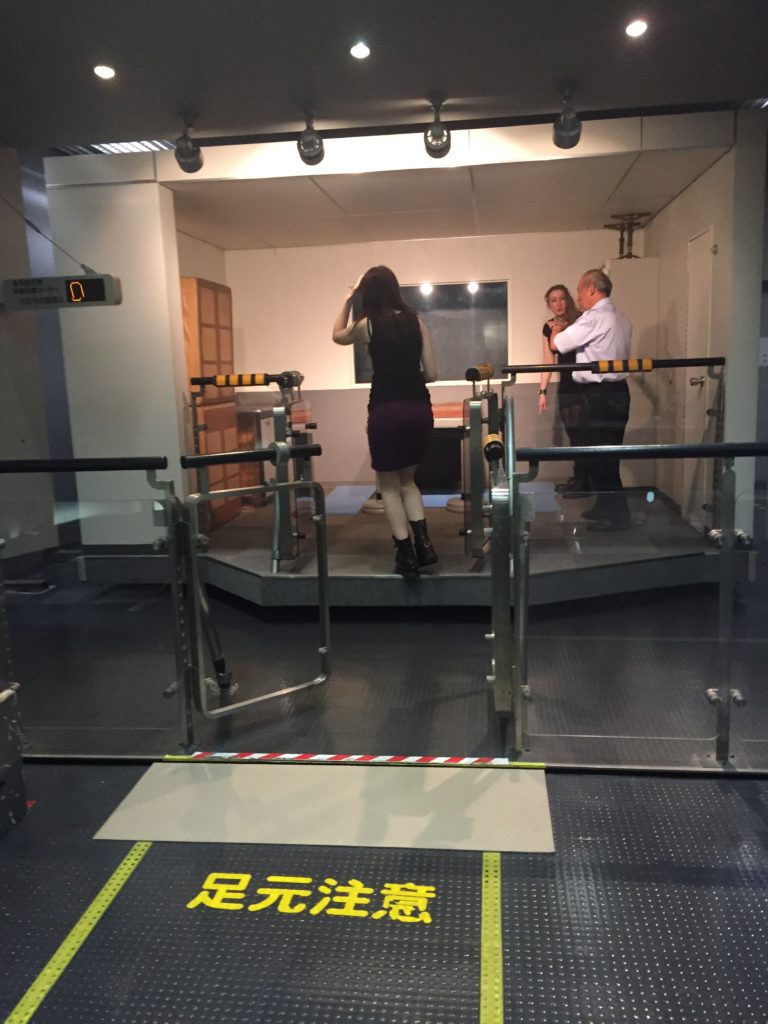
Experiencing an earthquake simulator
The whole environment brings to mind a science museum and at points, I did catch myself actually having a lot of fun. You can’t blame me. I got to dress up in a massive plastic suit and spray a fire extinguisher. The giggling was therapeutic; humor is a valid way to deal with fear and I was combining having fun with empowering myself against a huge anxiety.
Most of the videos at Honjo Bousai Kan have English subtitles, with the unfortunate exception of the one in the fire room. The explanation on how to use a Japanese fire extinguisher, however, was one of the most complicated parts of the tour and I held things up by asking for multiple explanations in simpler and simpler Japanese until I understood. Don’t be put off by the website saying they take reservations a year in advance because this only applies to big groups. I called the night before and got on my first choice tour.
Overcoming fear
Since then I have started taking baby steps to improve my disaster readiness. I have used the admirable guide from the Tokyo Metropolitan Government to locate my nearest evacuation area and shelter. I keep shoes by my bed and have twigged that it’s maybe not the best idea to sleep in the same room as my heavy chest of drawers, even if it’s cooler in the summer. My resolve has strengthened for me to learn some first aid, something I have been intending to do for a decade. You can bet the next time an opportunity to attend a drill comes along, I will go even if I am busy or hungover. TMG holds drills in English every January.
My resolve has strengthened for me to learn some first aid, something I have been intending to do for a decade.
If I’m honest, some days the anxiety does still strike. If I’m even more honest, it might be what stops me settling in Tokyo permanently and I’m not sure I want to grow old and frail in a country where my house could collapse on me. But for now, attending the disaster center tour did shift my mental state in a calmer and more productive direction. After all, wherever we are in the world we are less in control than we like to think. Maybe that’s what scares me the most. At least I can give myself the best possible chance of survival if the worst does happen.
And, as grim as it sounds, instead of spending my time living expecting to die, I can die expecting to live.
Recommended disaster readiness resources:
- Honjo Life Safety Learning Center, 4-6-6 Yokokawa, Sumida-ku, Tokyo
- Disaster Preparedness Tokyo Guide:, Tokyo Bousai by the Tokyo Metropolitan Government. Inquire at your local city office for a free copy. Every municipality in Japan has evacuation route maps and guides. Make sure you keep a copy of those at home and your workplace.
- For information on evacuation kits, see this article.
- Recommended anxiety resource: TELL Japan


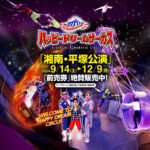
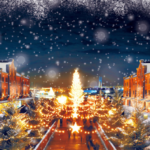
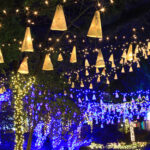
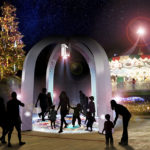






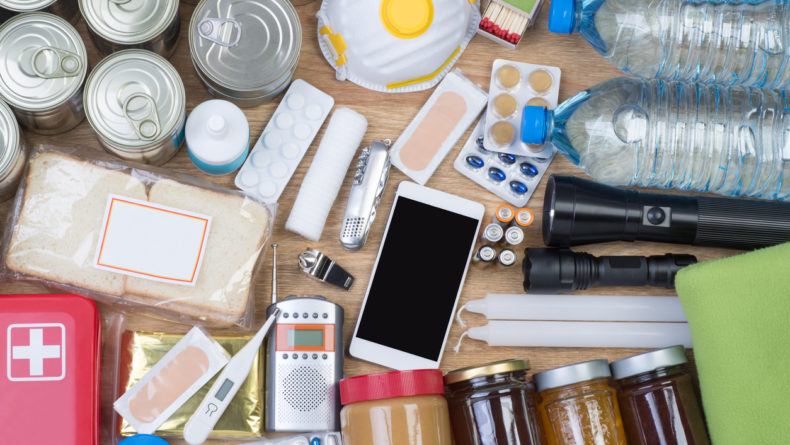
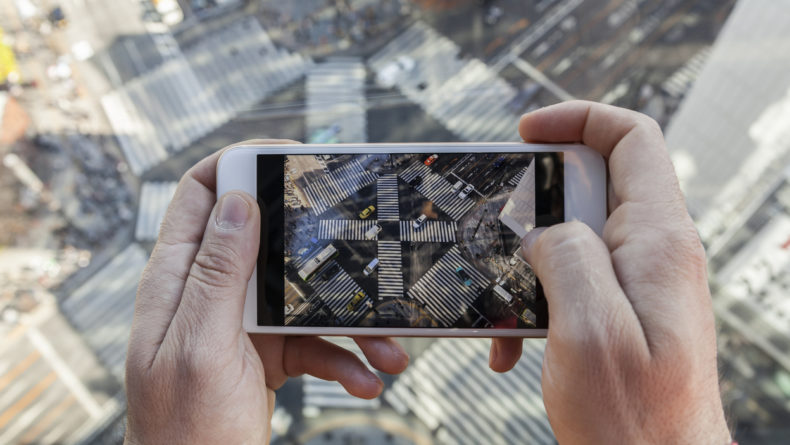
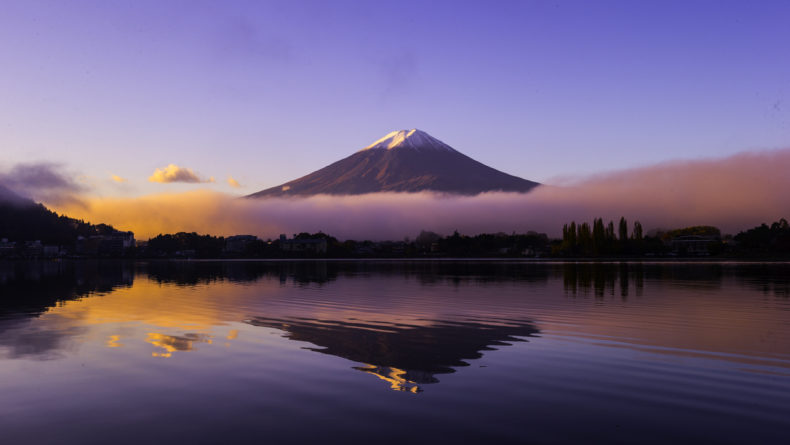

Leave a Reply